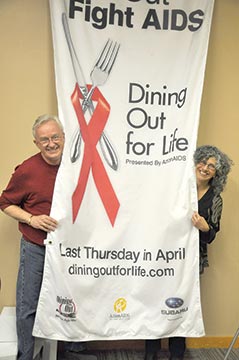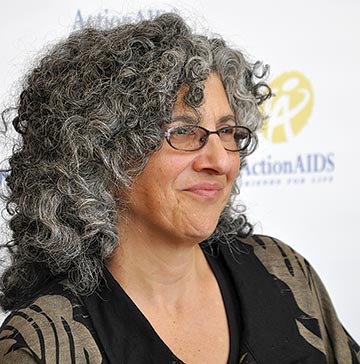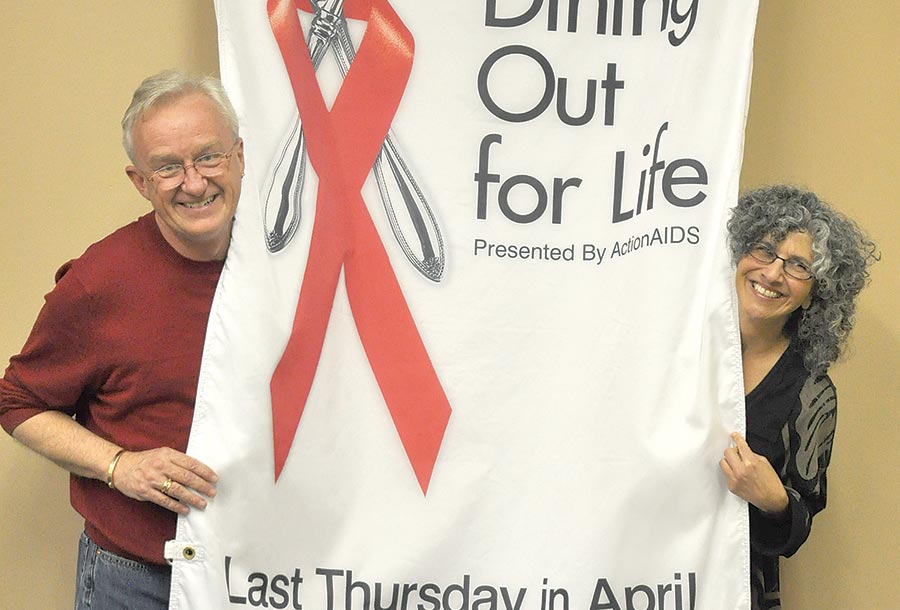The region’s largest AIDS fundraiser is coming up in just one week. There are no tickets to purchase or gala to get dressed up for. You only need to do one thing: Dine out.
The 25th anniversary of Dining Out for Life will be held April 30 at 213 participating restaurants throughout the Philadelphia region. To be part of this fundraiser, simply eat at a participating restaurant. Reservations are strongly recommended for this highly popular event. This year’s host restaurant will be Frankford Hall, 1210 Frankford Ave. Up to 33 percent of proceeds from each restaurant will go directly to Action AIDS.

“It’s stunning. I have been at the agency for 15 years and I started on the 10th anniversary of the event. I never thought we would be producing the 25th,” said Action AIDS director of development Michael Byrne. “This is the biggest Dining Out for Life we’ve ever had.”
Last year, DOFL raised $235,000 across the Delaware Valley, $195,000 of which went to Action AIDS in Philly. The event is Action AIDS’ largest annual fundraiser and enables the organization to direct 85 percent of every dollar raised to client services.
“Dining Out for Life enables us to deliver our services to the people who need them at the best cost ratio. It’s a very impressive number,” Byrne said.
The event made a milestone move when it sold its trademark to Dining Out for Life International in 1991 for $1, which allowed other organizations to produce the event around the country.
“It amazes me that this little event, which raised $15,000 its first year in Philadelphia, raised over $4 million last year in 60 cities across the nation,” said Byrne.
For a complete list of participating restaurants and more information, visit www.diningoutforlife.com/Philadelphia.
Q & A with Julie Drizen, Dining Out for Life co-founder

PGN: How did you first come up with Dining Out for Life?
JD: My girlfriend at the time worked at Action AIDS and I was a buddy to a 5-year-old boy with AIDS. I recognized that all the other events that were being organized to raise money required a lot more from people; get pledges for a run or walk or bike ride, or other high-end ticket items, like a dance party called Cha-Cha, which was expensive to get into. I thought that the barrier to participate in AIDS funding was too high, too much money or too much effort for people. I wanted to create a way for people to support AIDS without having to do a whole lot and inject a feeling of celebration into it. To get together with friends and loved ones, to honor those who had passed away. I also wanted to tap into the restaurant industry. There has always been a strong connection to the LGBT community. Many restaurant owners, chefs and staff were LGBT. After some brainstorming, this is what we came up with, Dining Out for Life. We would pick a single day and pick a group of restaurants that would donate a percentage of their profits.
PGN: What was the first year like?
JD: This was pre-Internet. What I remember was that it was really hard to get the first group of restaurants on board. We put a postcard together with a list of all the restaurants on it so you could call and make a reservation. We broke them down by which region of the city they were in. We had a hotline that we staffed with people to help handle reservations, to see who had space left. This was how we helped pass the word on. There was no open table. The day was really exciting, that evening we dined out and invited the media to cover it, and we ended up on all the local channels. Former Mayor Ed Rendell dined out. A lot of people did. It was an exciting moment; people were in such good spirits, feeling joyful. Because they were in a really busy, vibrant space and they knew. Everyone felt good. They were eating and drinking and donating and they were supporting business.
PGN: How many restaurants did you have the first year?
JD: It was something like between 30-40. Then it seemed to double in the coming years. I organized it for three years. It jumped to 80-90-100, and then we branched out into the suburbs as well.
PGN: What impact do you think Dining Out for Life has had over the years?
JD: I know that it has raised millions of dollars. It’s a highly visible, national event now. I have seen Dining Out for Life posters in other cities that I have visited, and it always gives me a thrill to see that, especially when they are still using the original logo. Any time you can organize a whole industry to pause and say, “This is important. We are going to rally around a cause that isn’t just our bottom line,” that’s huge. The nonprofit sphere has picked up on this and there are now other Dining Out for Life events and events like it. We were the first to do this and so many other causes have followed suit.
PGN: When you started Dining Out for Life, did you ever imagine it would grow as much as it has?
JD: No, there aren’t very many things that would last 25 years as an event. I intended for it to grow. Being a Philadelphian, my focus was always on this city and this community, but after we did the event two times, we created the first How-To manual. And we started to market the event to other AIDS service organizations to see if they wanted to do it. The idea was always to create a way to empower AIDS service organizations to take what we had done and make it successful for them. I had no idea it was going to become such a huge global phenomenon. It’s exciting to see. A lot of people have managed the event over the years and each person has taken it upon themselves to grow it.
